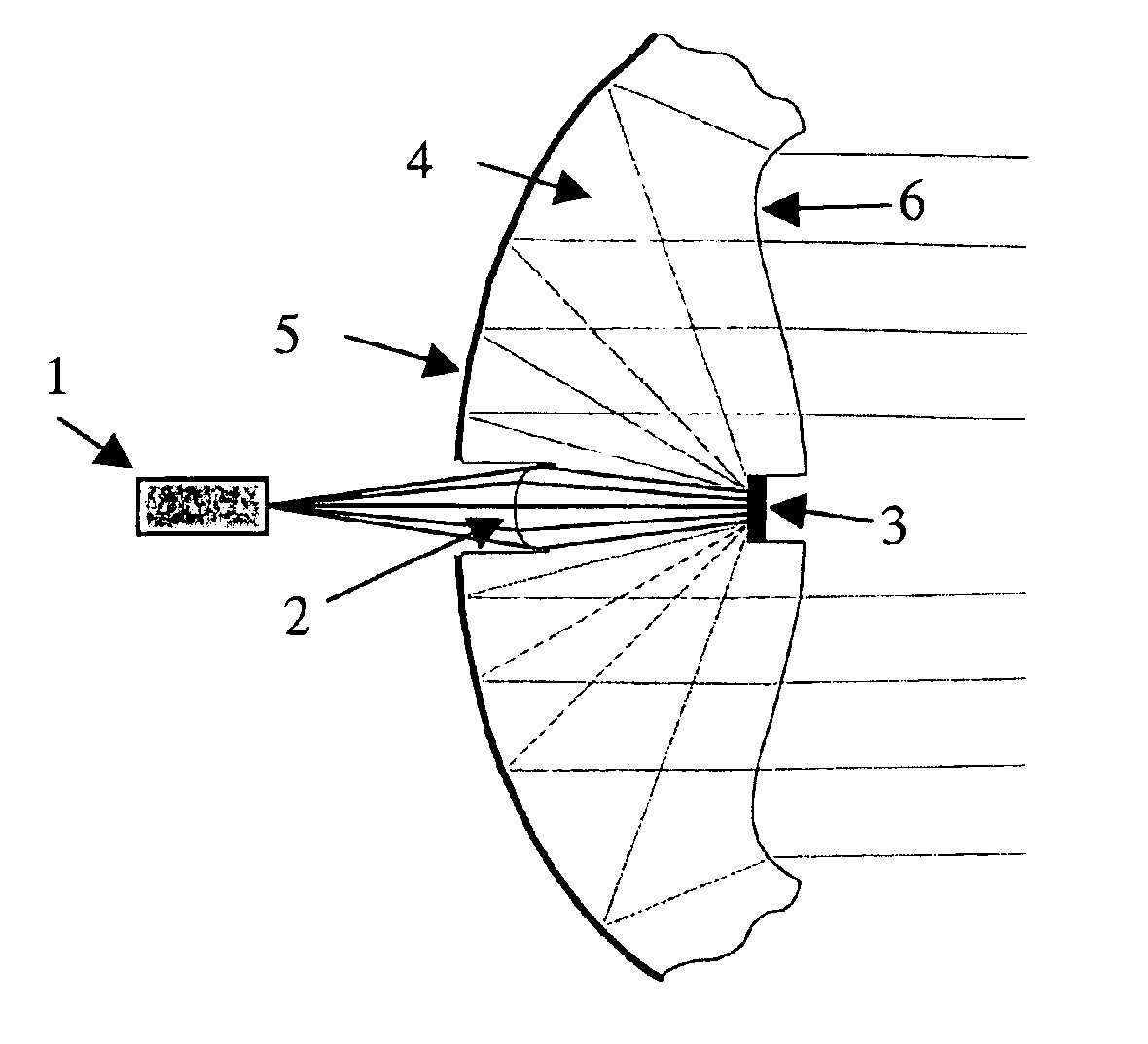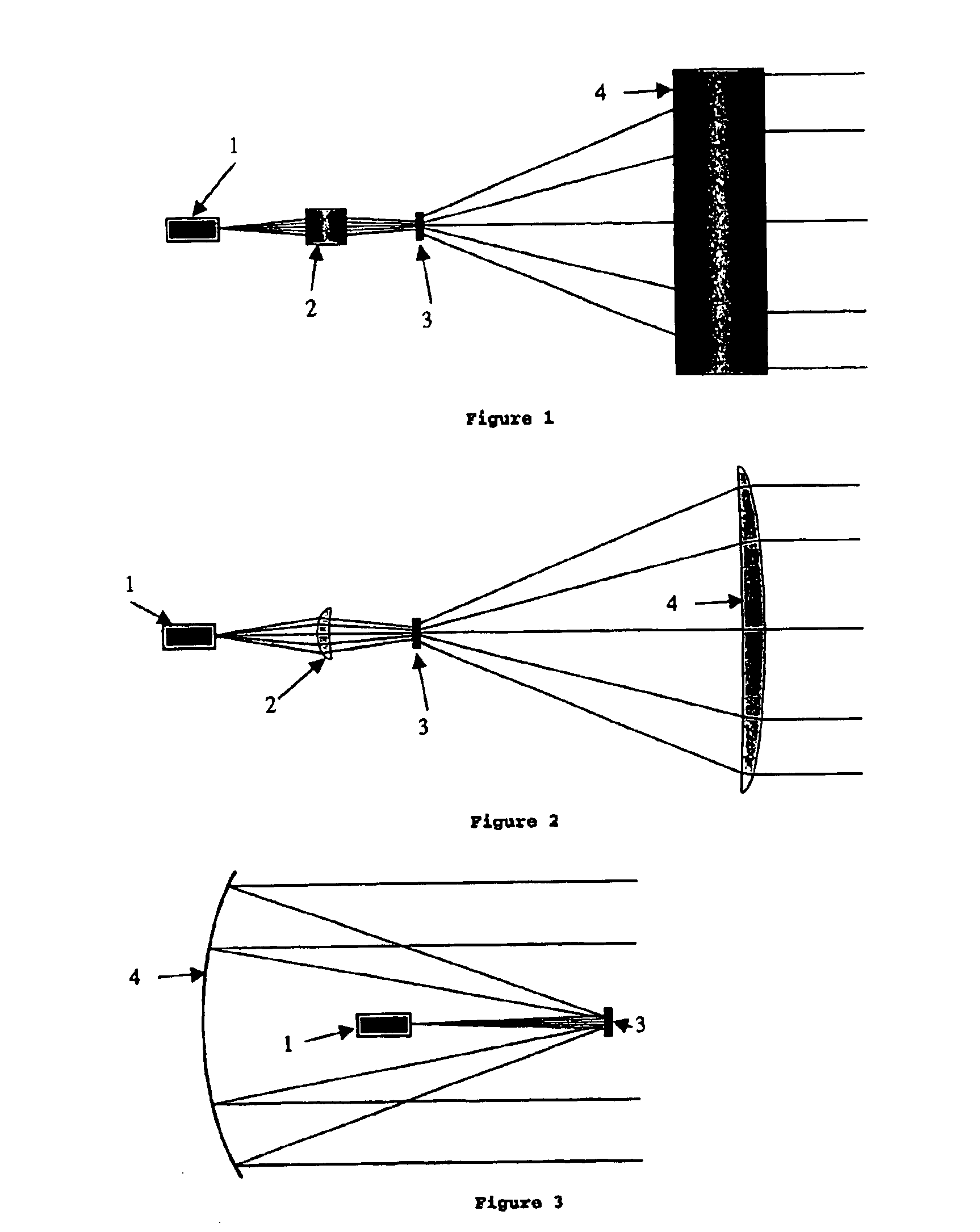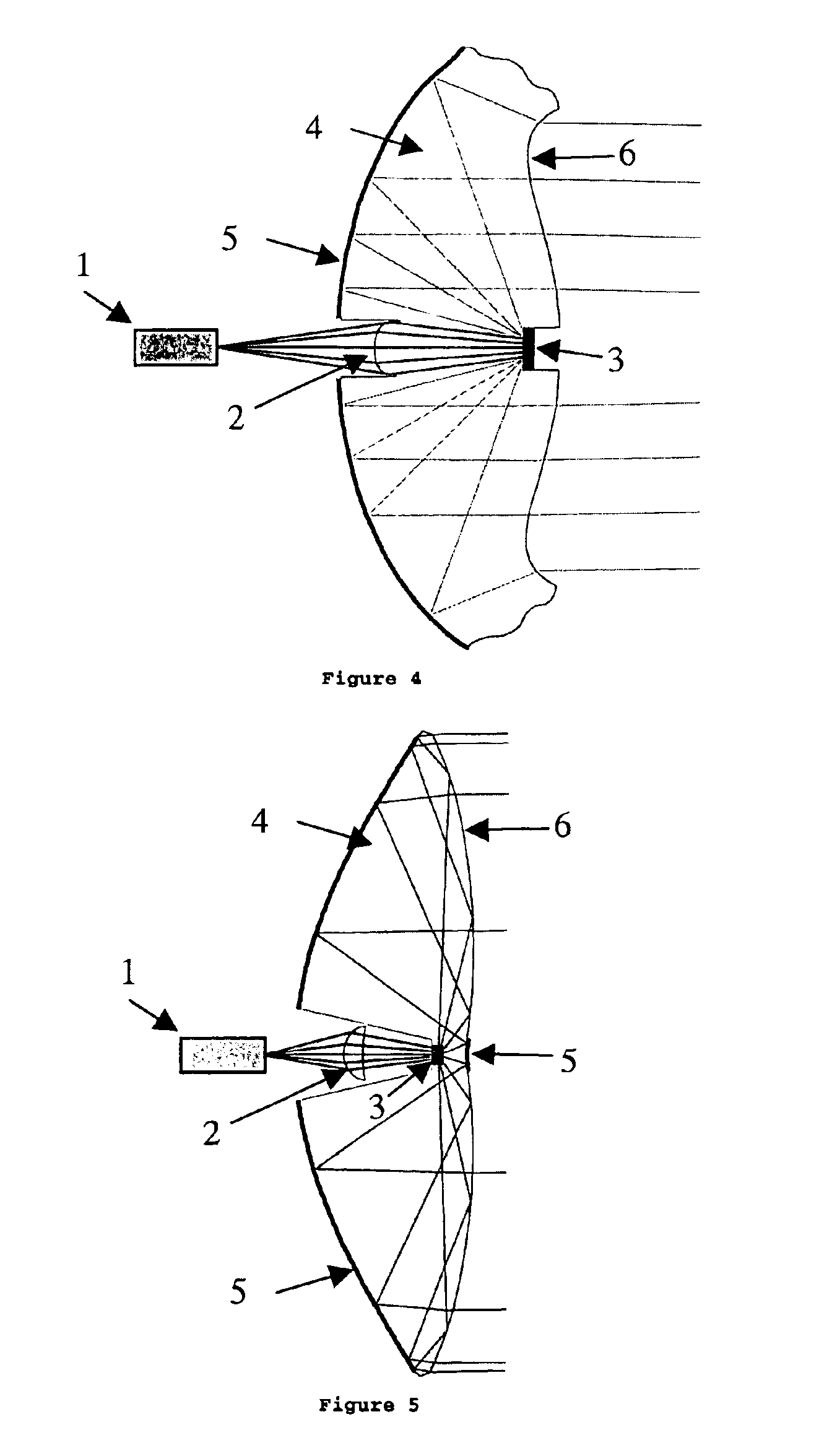Light source device
a light source and light source technology, applied in the direction of optical radiation measurement, instruments, semiconductor lasers, etc., can solve the problems of low propagation property of light, information leakage to the external, high secrecy, etc., and achieve the effect of easy control of the distribution of light on the diffuser
- Summary
- Abstract
- Description
- Claims
- Application Information
AI Technical Summary
Benefits of technology
Problems solved by technology
Method used
Image
Examples
Embodiment Construction
Hereinafter, a light source device of embodiments of the present invention will be described with reference to the drawings.
The present invention is a light source device comprising a laser light source for emitting monochromatic light or polychromatic light, a diffuser for diffusing the light bundle emitted from the laser light source and a collimated optical system referred to as a collimator which collimates the light bundle emitted from the diffuser, which is safe for human eyes and whose switching is performed at high speed. As a diffuser, a transmissive diffuser, a reflective diffuser, or a mixture diffuser which combines the transmissive diffuser and the reflective diffuser can be used, a laser light source directly emits the light bundle toward the diffuser, or injects the light bundle into the diffuser via the optical focusing system.
FIG. 1 is a schematic view showing a light source device applying the present invention.
The light source device comprising a laser light sourc...
PUM
 Login to View More
Login to View More Abstract
Description
Claims
Application Information
 Login to View More
Login to View More - R&D
- Intellectual Property
- Life Sciences
- Materials
- Tech Scout
- Unparalleled Data Quality
- Higher Quality Content
- 60% Fewer Hallucinations
Browse by: Latest US Patents, China's latest patents, Technical Efficacy Thesaurus, Application Domain, Technology Topic, Popular Technical Reports.
© 2025 PatSnap. All rights reserved.Legal|Privacy policy|Modern Slavery Act Transparency Statement|Sitemap|About US| Contact US: help@patsnap.com



